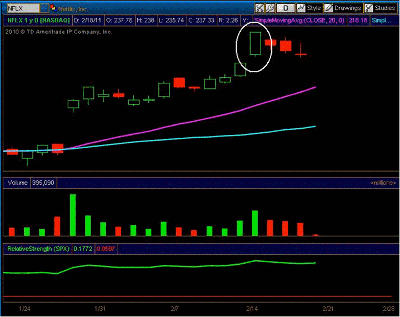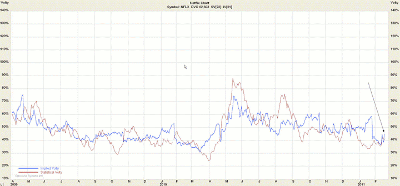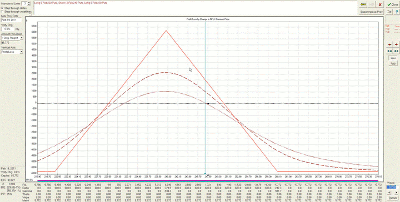A well-timed and executed butterfly spread trade returned 70%+ in just days following the stock’s correction from a new all-time high.
“I love the smell of napalm in the morning.” –Lt. Col. Bill Kilgore, Apocalypse Now
One of the opportunities available to the knowledgeable options trader is the ability to capitalize on major price movements while maintaining an acceptable risk profile. These opportunities are particularly attractive when they occur late in the options cycle because of the rapidly accelerating decay of the time premium of options. In appropriately structured positions, this time decay can be a wind at your back as the time premium relentlessly goes to zero at the closing bell on each options expiration Friday.
Let us consider the recent opportunity presented during the current options expiration week by Netflix (NFLX). As an aside, for those who have read my columns before, remember that we recently discussed an earnings trade on this underlying. Lest you think my screen is stuck on this underlying, remember that not all vehicles exhibit adequate liquidity for options trading.
NFLX is a prime example of a stock with huge open interest (OI), tight bid/ask spreads, and tremendous daily volume. These are the types of vehicles that work best for option trading. Beware of options with little liquidity, as they can lead to “Hotel California” syndrome; i.e. you can check in, but you can’t check out.
But I digress; let’s return to the situation in NFLX. This past Monday, the beginning of the February options expiration week, NFLX gapped up and reached an intraday high of $247.55, a price level that represented an historic all-time high for the stock. The chart is displayed below:
As is always the case in options trades, it is important to consider the reaction of the implied volatility to this price spike. As shown in the chart below, the rapid price rise resulted in a volatility spike. The at-the-money options went from an implied volatility (IV) of 34% at market close Friday to an IV of 44% at market close Monday.
As another aside, many option traders consider that IV is inversely correlated to price. This current reaction demonstrates the more accurate view that IV is more closely correlated to the velocity of price change.
These factors together with my prognostication that this spike in price was, at least for the short term, not sustainable, led to the initiation of a high-probability trade. The structure of the trade was that of a put butterfly constructed with a bearish directional bias. The essence of the trade was two-fold:
- I expected downward movement in the price of NFLX
- A dual impact on the time premium sold within the butterfly
This hypothesized dual impact would be both time decay into expiration and decreases in implied volatility (IV) as the unsustainable price velocity slowed. The structure of the trade implemented Monday afternoon and its expected profit and loss (P&L) behavior is graphed below:
Pay particular attention to the lowest broken line, which represents the P&L characteristics at the time the trade was initiated. Using the options expiration breakeven points as stops, the point at which the solid red line crosses the 0 point, a potential risk/reward in excess of 1:7 is possible.
Over the next two days of market action, the prediction of a decrease in price came to fruition. At the market’s close Wednesday, I removed half of the trade and captured a return of 32.6% on invested capital. The remainder of the trade remains in place and currently shows a profit of around 40% on invested capital.
One of the important functional characteristics of option positions in general is the extreme dynamic nature of their profitability. It is for this reason that it is often wise to remove part of a profitable position so as not to suffer economic loss, and more importantly, the damage to emotional capital from allowing a winning position turning into a loser.
When considering the dynamic nature of option positions, one of the fastest potential movers is a butterfly at expiration. As the position approaches expiration, the rapid decay of time premium results in extreme sensitivity to price movement. Butterflies turn from gentle creatures, lazily flapping their wings in the breeze, to man-eating dragons as expiration approaches. Be prepared to slay the dragon before he can take your hard-earned profits.
By JW Jones of OptionsTradingSignals.com
























